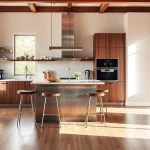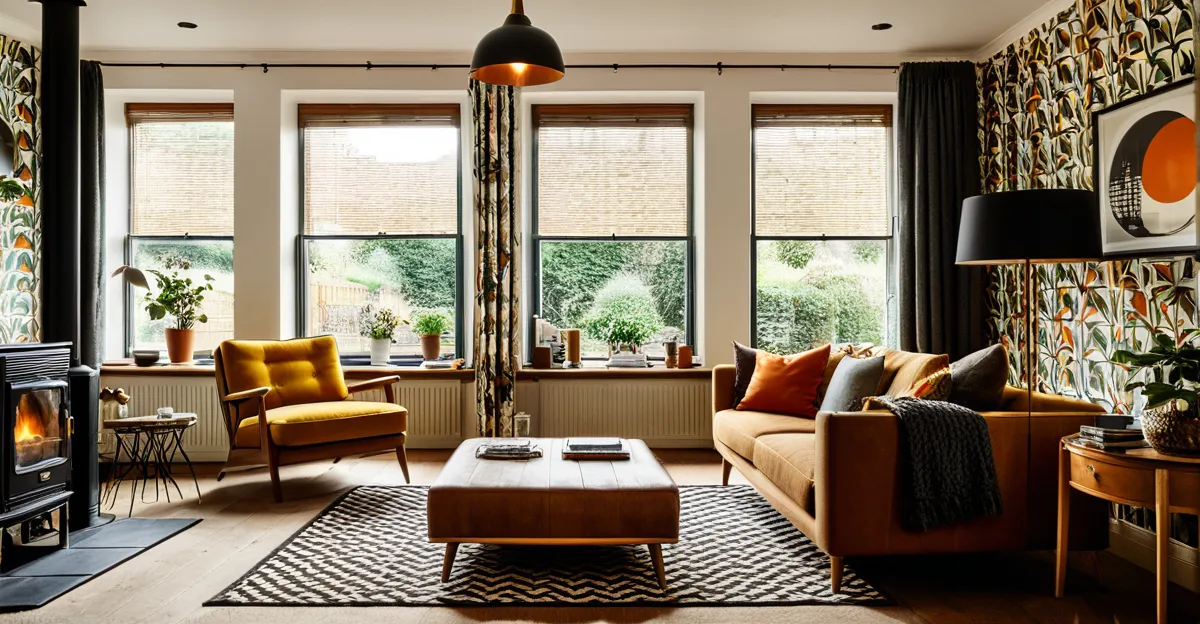Integrating Vintage Furniture into UK Home Spaces
Sourcing vintage furniture in the UK starts with knowing how to identify authentic pieces that complement your home decor. Look for well-crafted items with materials like solid wood and unique patinas, which add character and authenticity to your space. In UK interiors, vintage furniture can provide warmth and history, balancing sleek modern aesthetics with classic charm.
When blending old and new, consider style, scale, and color palette. A vintage armchair with a contemporary sofa creates visual interest without clashing, especially if both share a common hue or texture. Incorporating vintage lighting or side tables can also anchor a room, providing conversation pieces while maintaining cohesion.
Topic to read : How Can You Transform Your Home with Sustainable UK Design Trends?
For sourcing vintage items, explore local auctions, charity shops, and specialized markets. Online platforms dedicated to vintage furniture in the UK offer curated selections that meet various budgets. Always inspect items closely for wear or repairs, ensuring durability alongside style.
Successfully integrating vintage furniture into UK home decor enriches living spaces by combining timeless craftsmanship with modern comfort, creating interiors that feel both familiar and refreshed.
In parallel : How can you incorporate seasonal elements into UK home styling?
Using Vintage Décor and Accessories for Maximum Impact
When embracing vintage décor for UK interior inspiration, focusing on statement accessories is key. A well-chosen vintage armchair or ornate mirror can anchor a room, creating an immediate period charm. These pieces often showcase exquisite craftsmanship and bring history alive within modern spaces.
Mixing accessories from varied eras adds depth and authenticity. For example, pairing a 1920s lampshade with Victorian textiles can form a harmonious yet eclectic atmosphere. Lighting plays a pivotal role—the soft glow of vintage lamps heightens period details, enhancing architectural features like cornices or fireplaces common in UK homes.
Textiles and artwork are powerful tools for bringing history indoors. Floral chintz curtains or framed botanical prints celebrate UK motifs, echoing traditions from countryside cottages to urban townhouses. Combining these elements thoughtfully highlights the narrative behind vintage décor, rather than simply decorating with old items.
Ultimately, the magic lies in the balance—integrating diverse vintage accessories while respecting their historical contexts ensures your interior achieves maximum impact with authenticity and style.
Embracing Vintage Colour Schemes and Finishes
Creating interiors with vintage colour palettes taps into timeless charm by drawing from historic paint colours UK. These palettes often include muted shades such as sage green, dusty rose, and soft ochres—colours closely linked to distinct historical periods like the Victorian or Edwardian eras. Using these shades helps evoke authenticity and a sense of heritage in any space.
Traditional paint finishes play a crucial role in enhancing vintage aesthetics. Matte or eggshell finishes mimic the understated elegance found in older homes, avoiding the high gloss sheen typical of modern paints. Complementing paint with period wallpapers, from delicate florals to more geometric Art Deco patterns, adds depth and texture while keeping the vintage spirit alive.
Mood boards are invaluable tools when visualising combinations of vintage colour palettes and finishes. By assembling swatches of paint, wallpaper, and fabric alongside photographs or sketches of historic interiors, enthusiasts can better anticipate how chosen hues and textures will harmonise. This process ensures that the final design remains cohesive and true to the vintage character intended.
Sourcing Vintage Elements in the UK
When exploring UK vintage shops, you’ll find a rich variety of unique homeware pieces, from classic mid-century furniture to charming retro decor. Cities like London, Brighton, and Manchester host renowned shops specializing in authentic vintage items. In addition, antique markets such as those in Portobello Road and Camden offer diverse selections where you can negotiate prices directly with sellers.
For convenience and wider selection, online marketplaces have become invaluable. Platforms focused on vintage homeware connect buyers with sellers nationwide, often providing detailed photos and descriptions to help you assess authenticity.
When selecting vintage pieces, focus on authenticity and quality: check for maker’s marks, inspect joints and finishes, and be cautious of modern reproductions. Inquire about the item’s history if possible; this adds to its charm and confirms its provenance.
Sustainability is another benefit of vintage shopping. Choosing second-hand items helps reduce waste and supports eco-friendly shopping habits. Besides being kind to the environment, vintage homeware offers budget-conscious shoppers the chance to own stylish, unique items without paying retail prices. This blend of value and sustainability makes sourcing vintage elements both rewarding and responsible.
Blending Vintage and Contemporary UK Home Styles
Balancing vintage charm with modern functionality requires thoughtful layering of textures, colours, and furnishings. In UK home trends, transitional décor stands out by combining classic elements like ornate mouldings or antique furniture with sleek, contemporary lighting and clean-lined sofas. This blend brings harmony in design, ensuring spaces feel both warm and current.
A key technique is to use vintage pieces as focal points—such as a restored Victorian cabinet—while surrounding them with minimalist, modern accessories. This approach prevents décor clashes, which often arise when eras compete for attention. For example, integrating eclectic rugs or patterned wallpaper can anchor vintage items and enhance cohesion.
Case studies across UK interiors reveal how soft neutral palettes and mixed materials create fluid spaces. Designers recommend balancing the warmth of wood with the coolness of metal or glass to sustain that delicate blend. By following these strategies, homeowners can enjoy timeless spaces that reflect both heritage and today’s dynamic style.







